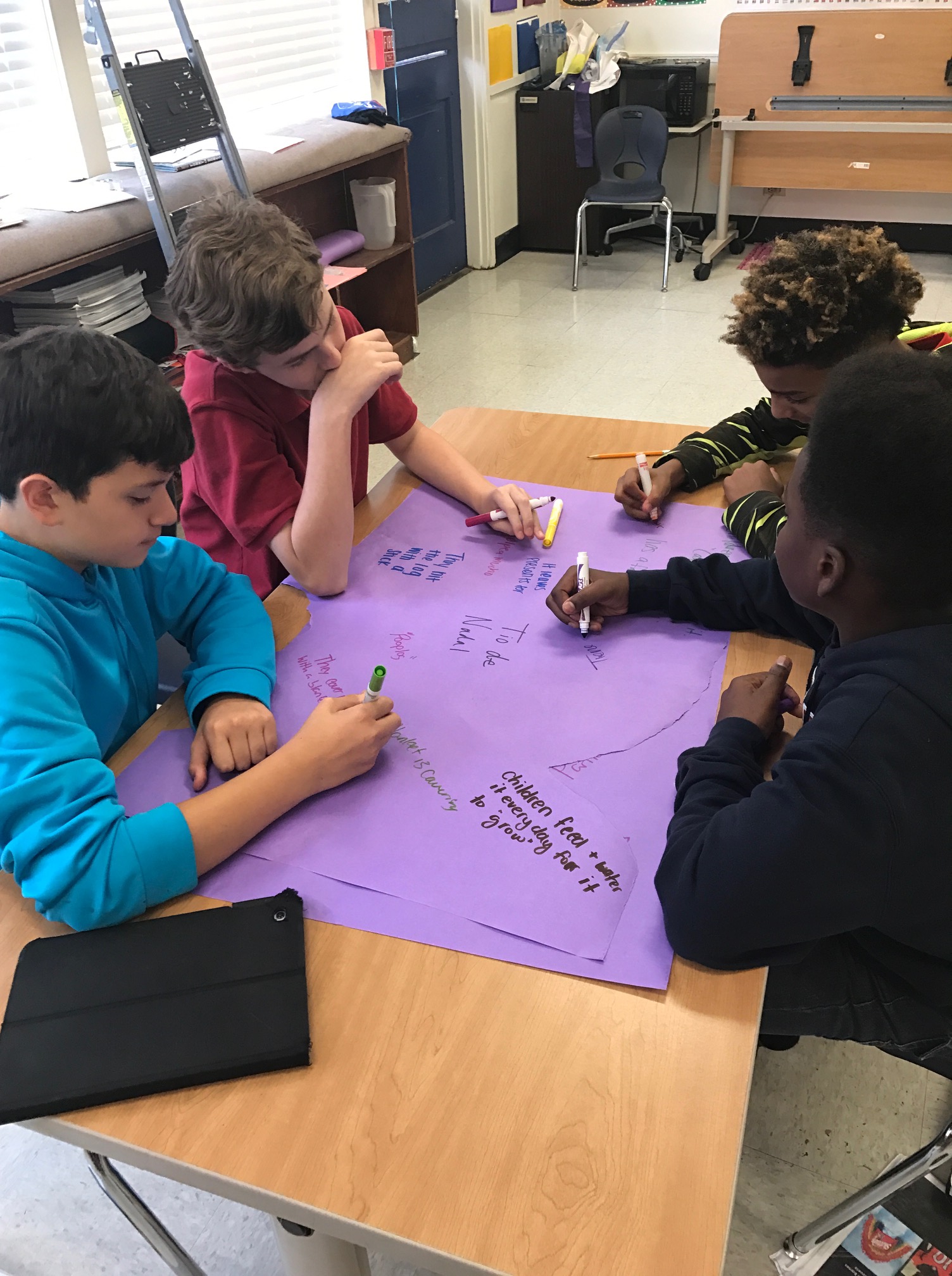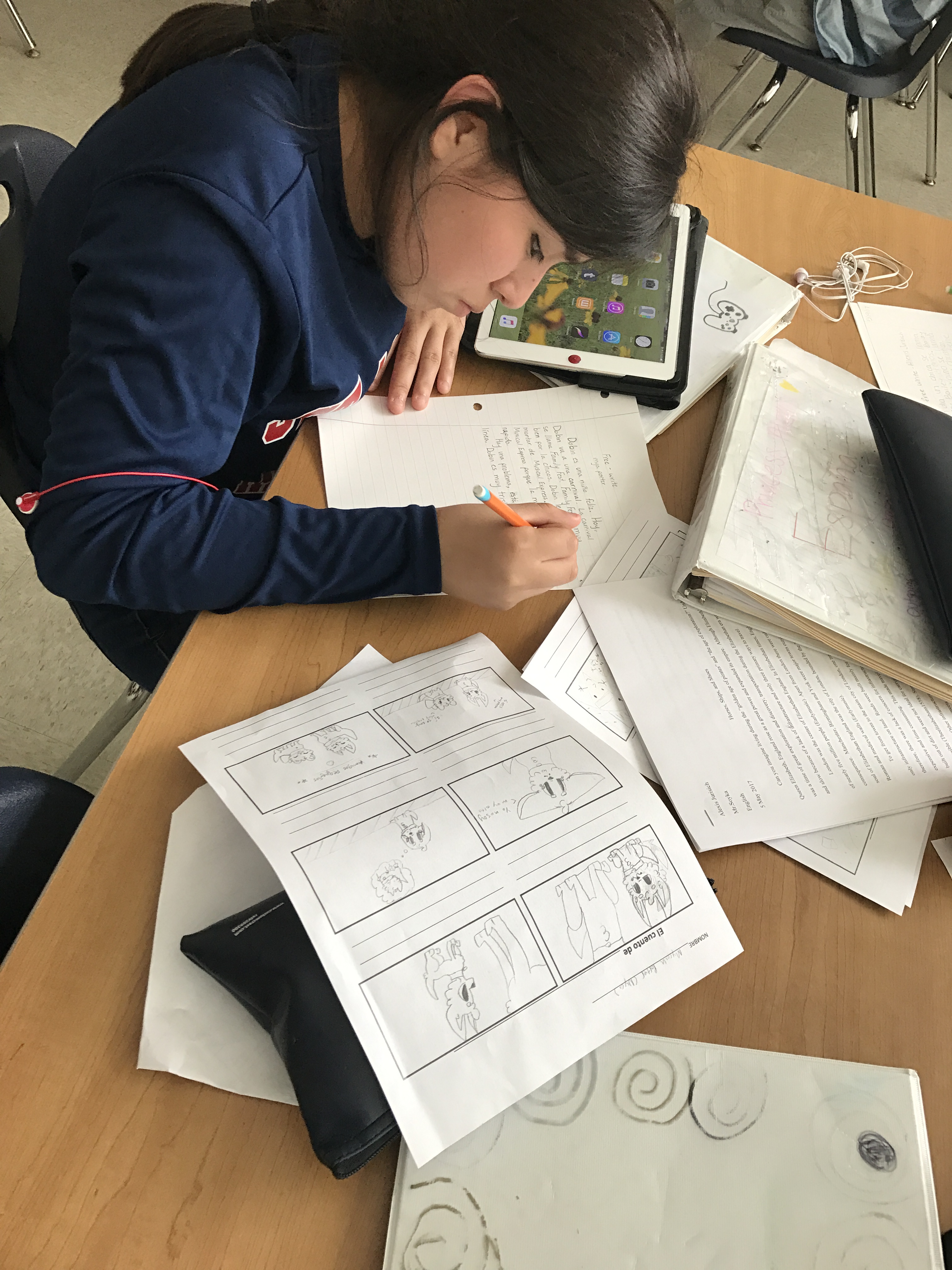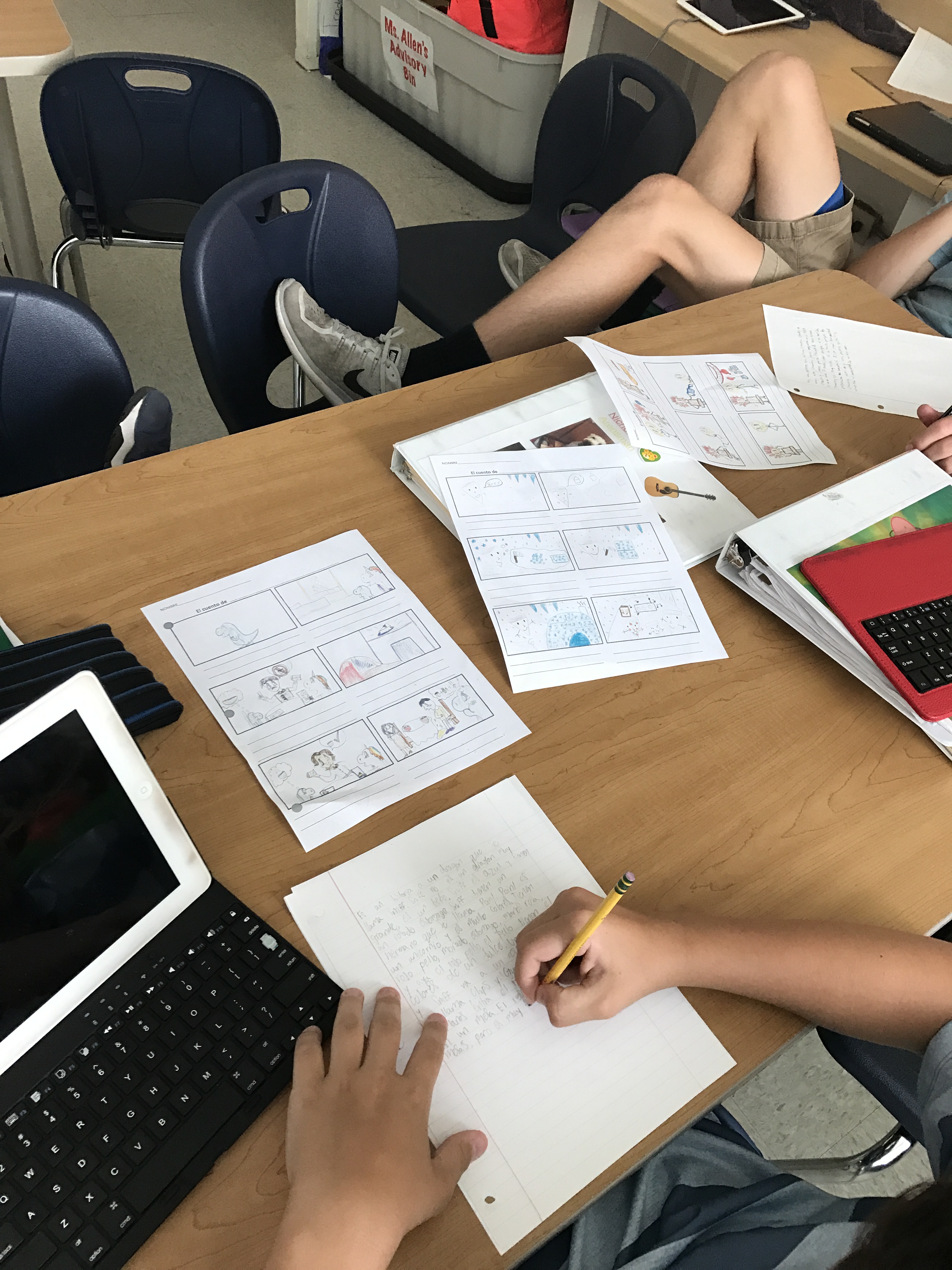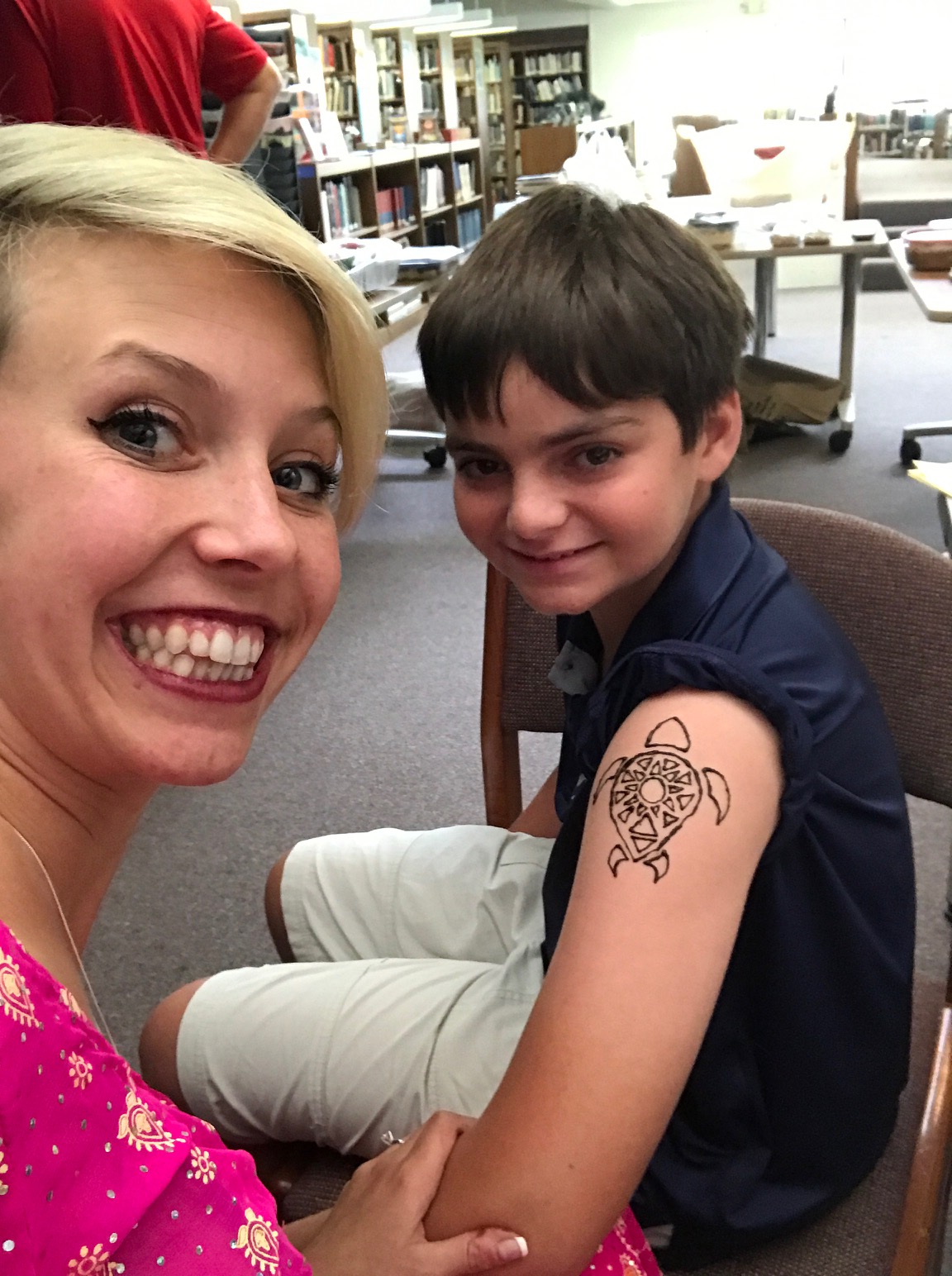Exams and REVIEW! VIDEOS included ;)
Merrrrrrrp…..
I know opening up a blog to read about Exams is about as exciting as opening a blog talking about faculty meetings, or school dress code. HOWEVER, I have received several emails this week asking about what I do for exams so I thought I would share here.
What should you do if you are required to give a final exam? Well, we know we do formative assessments all class every class so we, more than almost any other teacher have a very good understanding of where each and every one of our students are, we know what they “know” and are able to “do”. Yet still, admin are looking for a summative assessment. If you are planning to give an exam in a foreign language classroom, I believe it should be proficiency based. Growing up as a teacher in the Denver Public School District was invaluable. Diana Noonan and her incredible team of teachers have spent years crafting an exam that can be given at the beginning of the year and then again at the end of the year, to every World Language student in the district. Since almost the whole district teaches using Comprehensible Input, the results are always the same. The students AND faculty are reassured and AMAZED at the incredible growth each and every student shows. GROWTH is what I want to grade my students on. The wiki DPS has created is phenomenal for not only its resources, but also for understanding proficiency levels. Unfortunately, the foreign language budget at my school is minuscule and we can’t afford to purchase these tests to inform our practices so I have had to create my own. I gave all of my students a test at the beginning of the year, in Speaking, Reading, Writing, Listening, and Culture and I will do so again next week during exam week (yes the exact same test). My goal is for students to feel proud of the GROWTH they can show me after a YEAR of Spanish instruction in a Comprehensible Input classroom.
This is the first thing you should see.  I stole this idea from the Math teacher in my school. Ms. Nekoz wanted to create a way to hold her students accountable for reviewing for their exams, so she created a review packet for them and a complete, organized, accurate review packet counts for 50% of the student’s final exam. I think this also helps students who are poor test takers. Perhaps because of anxiety or focus problems, some students who usually receive poor test grades, can greatly benefit from this if 50% of their final grade is based on reviewing. I implemented this in my classes for both of those reasons but also because I needed a way for students to not be so intimidated by that HUGE daunting grade. Our exams are required to be 20% of our student’s final grade in our class. That is enormous. Also, I have been allowing students to “review” and complete their “packet” for me IN CLASS leading up to exam week. I am not asking them to do any work at home. So essentially, they are still just getting graded on class participation as part of their final grade. They love this. First I will explain what my exam includes then I will explain what the review looks like.
- Reading: They read several passages in Spanish and answer comprehension questions about what they read.
- Writing: They look at a cartoon with 4 panels using the same rules I always give them for free writes:
- NO INGLÉS (use circumlocution)
- Create a story (beginning, middle, end)
- Variety of verbs (not just tiene, es, and quiere the whole story)
- BE CREATIVE (you just have the skeleton, the details are YOURS to create!)
- BUT PLAN IN SPANISH SO YOU ARE ABLE TO WRITE IT IN SPANISH!!!!
- Listening: They will listen to 3 videos (of three different people speaking) and they will answer comprehension questions about those videos.
- Speaking: They will have thirty seconds to look at three different cartoons. They will then tell a story about those cartoons using similar rules to the free write rules above.
- NO STRESS! It is just me! 🙂 have fun with it!
- NO INGLÉS (use circumlocution)
- Create a story (beginning, middle, end)
- Use a variety of verbs (not just tiene, es, and quiere the whole story)
- BE CREATIVE (you just have the skeleton, the details are YOURS to create!)
- If you are THINKING in Spanish you will be able to SPEAK in Spanish
- Culture: In the first section they will answer multiple choice questions about various holidays that we have studied (these will all be in Spanish). In the second section they will pick one of the legends we have recently learned about and write as much as they can about that legend (in English for 6th grade and in Spanish for 7th and 8th)
For the review, I provided students with an “assignment” in Google Classroom. The assignment included a page for review for each part of the test, Reading, Listening, Writing, Speaking, and Culture. This is what that looked like:
READING:
To review for reading, we spent one day reading from our fun student-created FVR library. P.S. (I just received a grant to buy novels for my class for next year!!! EEEPP!) Then we spent another day reading stories created by all of my classes throughout the year like this one (created from a movie talk), or this one (based on the units on the Chupacabra and the Loup Garou I taught). I decided to play a game with it to make it more fun. I explained to my students that on the actual exam they would be reading different passages in Spanish and then they would be answering various questions to check for comprehension. To “practice”for this, they read one of the stories silently for a few minutes on their iPad, then everyone was given a mini-white board and dry erase marker. I then asked the class a question to check comprehension of the reading, and students raced to write the answer.  I also explained that it didn’t matter if they were first or not, what mattered is that they were getting the correct answer. Be careful not to play competitive games like this if you don’t have a very safe and respectful classroom culture set up. That’s why I wait until later in the year to play games like this one. These two “review” days counted as credit toward the “reading” part of their exam review, and guess what!? Everyone received 100% 😉 easy peasy! If students wanted additional review, I allowed them to check books out, or they were given links to a textivate story like this one.
LISTENING:
Students were given one class period to watch Señor Wooly videos and do Nuggets related to those videos and they also had access to Listening Review videos**  like the one below on my YouTube channel. For their review packet, they had to print out one page of screenshots showing the completion of nuggets. I was LEAST concerned about them “reviewing” for the listening exam because they spend all day every day listening to me 🙂 The students felt the same way, which is awesome. **I speak at a much faster pace in these videos than I do when we are in class, however in the exam the videos are spoken at a pace that students would hear out in the “real world” so I would rather give them real examples of what they will hear on the test.
CULTURE:
Students were given a list of different cultural themes and subjects we have learned about this year, as well as links to my presentations about them (like this one on el dÃa de los Reyes Magos or this one on el tió de Nadal). Then set up the tables for the day and I gave each table a piece of butcher paper with a cultural subject written on it. Students had 2 minutes to write notes (IN SPANISH) about what they remember from the lesson. Then we rotated the papers. Next, I allowed them to open up their document and take notes as we reviewed all together. Here are videos of those two steps.

WRITING:
I had students complete a free write one day, and then the second day, they completed what I call a “structured free-write”. They had the opportunity to choose a cartoon from these 4, then writing a story about that cartoon on another piece of paper. They did it on another piece of loose leaf paper because I wanted them to write in as many EXTRA details as possible  (not just write about the obvious details in the drawings).


SPEAKING:
We used these same four cartoons to practice the speaking test. My students and I have worked ALL year to create a REALLY safe place for them to speak confidently in their second language in front of each other. There is no judgement. I gave all the students 60 seconds to select a cartoon, then they just all spoke all at once creating a STORY about that cartoon as they spoke. Then in pairs, they told a partner their story. The best part about this was that they heard different ideas for expanding stories and adding details from their friends. Here are some videos.
I hope this helps give you some ideas of how you can create an exam and make it more stress free and proficiency based for your kiddos!
WE ARE ALMOST THERE!
Until next time,
HAPPY TEACHING!
Love,
La Maestra Loca


Hi! I am definitely going to give an exam in the beginning of this coming school year like this! I always think about it since I want a way to show growth but I haven’t done it yet! I’m just wondering…you have all students talking at the same time on the Speaking portion-even during the actual exam. How do you assess? Since I’m preparing for the beginning of the school year, I’m really not going to give them a grade anyway, but high schoolers will wonder how in the world I am listening to all their “stories” at once.
Thank you!!!
Hi Annabelle! I have a question related to Sr. Wooly? How do you implement his videos/songs into your classroom? Do you “movie talk” them? I saw the video on “dibujos con tiza” and I wondered how they knew the songs.
OH GOSH! I have a blog coming SO soon! There are a million ways to use his site! I really milk them. I DO NOT let kids watch them at random. We build up to them. Once we’ve acquired the language they need to fully understand them, I introduce them. They LOVE Wooly. Keep your eyes out for that blog! I promise I will post ASAP!
Thank you for letting me know! I’ll be on the look out for that! I LOVE SR. WOOLY too! He’s so funny!
I am a total fan girl!
I don’t have the talk at the same time when I am doing the actual exam. During the real exam, I pull them out one at a time for the speaking assessment. That way they don’t have to feel like the whole class is listening but I can really assess what their proficiency is privately.
I spoke this year to the students who had me last year. Not to any of my “new” students because with 90% of them having never had language before I can assume they are novice low.
Thank you for sharing all your experience and knowledge! I teach Chinese and I have really loved learning from you!
I wanted to ask about speaking assessment- I know you pulled them individually to speak with them. This is what I have done in the past, but I find that it is time consuming with large classes and then I have to generate a packet or something for the other students to do while I am one-on-one with a student. Have you ever recorded prompts and had the students record their answers? Or found a way to do this online? I guess I am looking for something like the AP test where all testers are listening and answering at the same time.
I know lots of teachers who do this. I pull them out individually as they work on the reading and writing test. You could maybe use flipgrid for this… or have students record on an ipad and then upload to google classroom. I also used to use Google Voice, but you’d need kids to bring their cellphones to class for this. I will try and blog about how I’ve used that before soon… xoxo Good luck my friend!
Hi! I was wondering if you wouldn’t mind answering my post from above about speaking portion. Thank you!
I don’t know how but I deleted our last comment thread. I do have kiddos who had me last year speak to me. If they are new though, I can assume that their level is novice low for speaking and I don’t put them through that because I don’t want their affective filters to be raised. There is no point. I am glad that my blog is helpful to you! 🙂 Keep reading! 🙂
Ok, that makes sense! Thank you!!
Sure!
Do you do something similar for the lower grades like Tk-5th grades?
Sorry for the delayed response! I thought I had taken care of all of these comments! 🙂
I did the exact same thing for third through 5th grades. Not younger than that though…
Is there somewhere you share your exam for Spanish 1?). Also, I am interested in learning more about the denver test. Where can we get info on thosẹ̣̣̣̣̣̣̣̣̣̣̣̣?)
https://dpstci.wikispaces.com/ This is their wiki. Diana Noonan is probably the contact to chat about the tests. I don’t have my exam to share right now. I am not quite ready to share because I don’t have rubrics created… I think the most important thing is that teachers are measuring and grading on growth in proficiency not grammatical accuracy
I’m wondering what kinds of videos you use for the listening section in the actual test. Is it yourself or do you find other videos/Recordings? Do you have any go to sources for these types of listening assessments. I’m in the process of creating my final and I plan to tell them a story and have them summarize it in English but I also wanted to include some sort of video that isn’t me speaking. Thanks!
Great question! I write stories to be read out loud by a native speaker. Since they are listening to the same videos at the beginning and end of the year, they should (hopefully) show growth 🙂
Hi! For the listening and reading parts do students answer comprehension questions written in Spanish or English? Do students respond in English or Spanish? Do you cover up any super 7 posters, other useful information to establish meaning that is up in the class during the exams?
During the pre-test I don’t bother covering anything because there is hardly anything up on my walls at the beginning of the year. At the end of the year, yes, everything is covered. Comprehension questions are in English and Spanish. If the questions are in English they answer in English, if they are in Spanish they answer in Spanish.
Thank you so much for the time you take to answer all of our questions!
Of course!